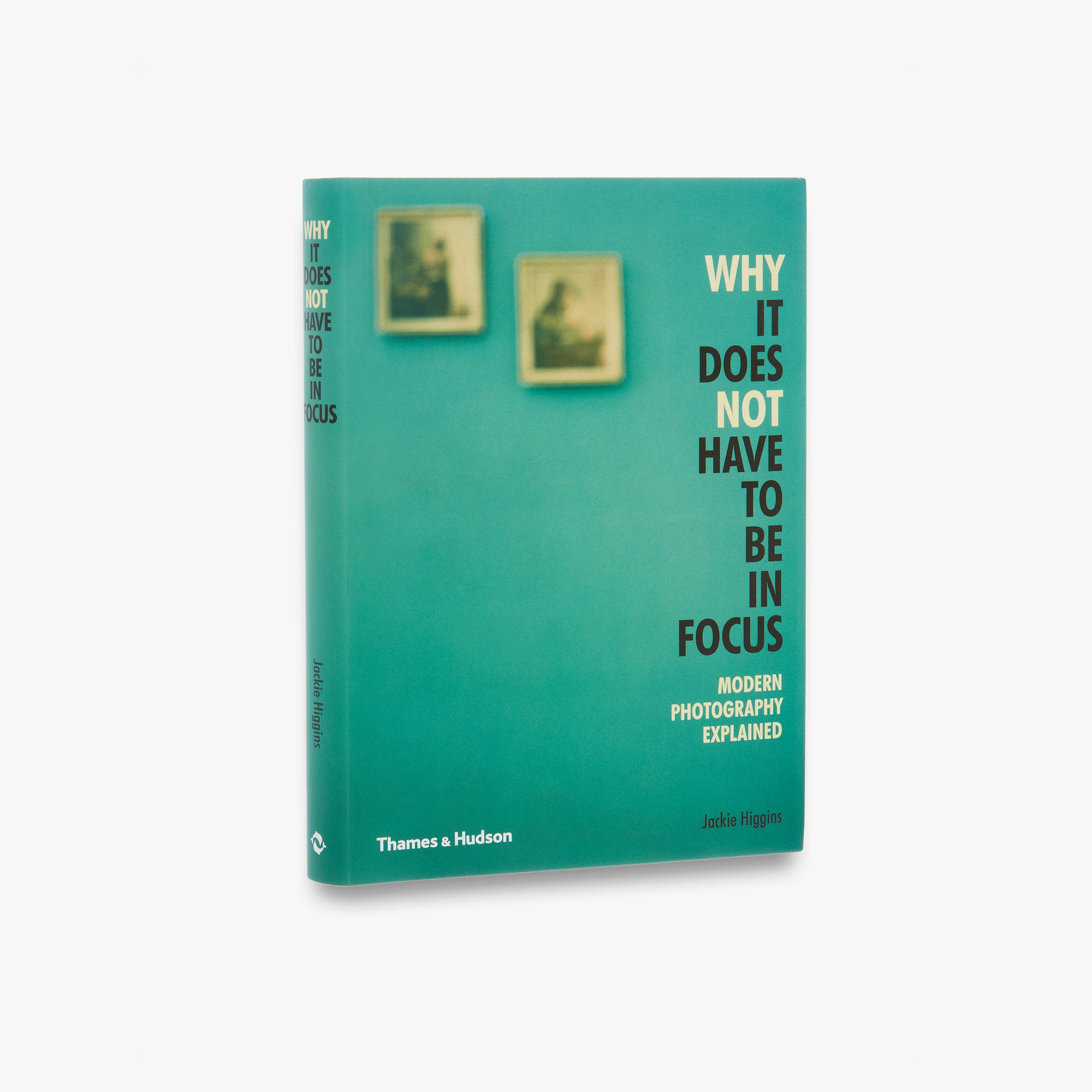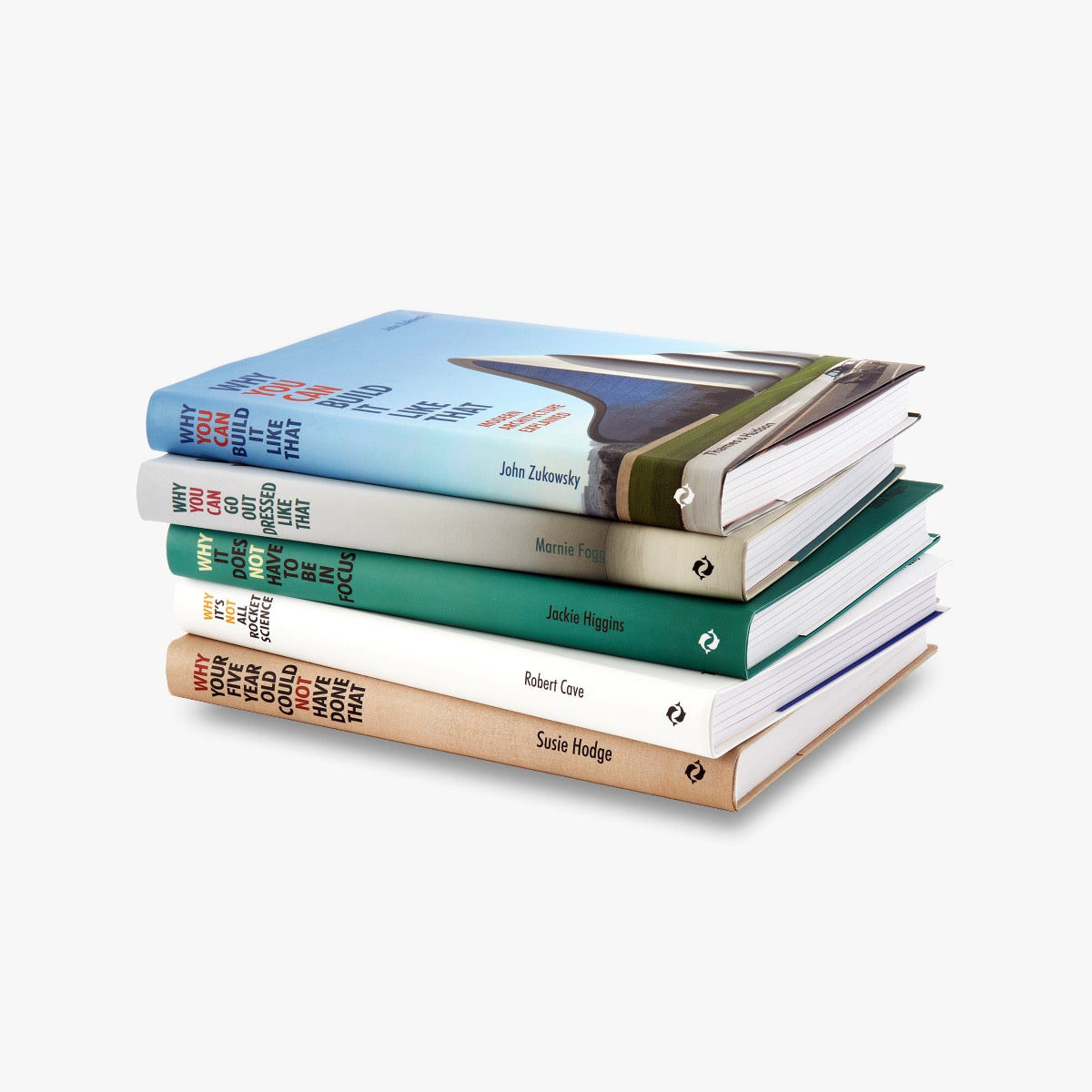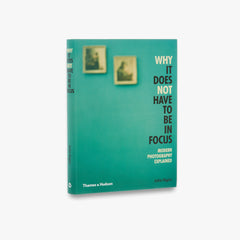Why take a self-portrait but obscure your face with a lightbulb (Lee Friedlander, Provincetown, Cape Cod, Massachusetts, 1968)? Or deliberately underexpose an image (Vera Lutter, Battersea Power Station, XI: July 13, 2004)? And why photograph a ceiling (William Eggleston, Untitled (Greenwood, Mississippi, 1973)?
In Why It Does Not Have To Be In Focus, Jackie Higgins offers a lively, informed defence of modern photography. Choosing 100 key photographs – with particular emphasis on the last twenty years – she examines what inspired each photographer in the first place, and traces how the piece was executed. In doing so, she brings to light the layers of meaning and artifice behind these singular works, some of which were initially dismissed out of hand for being blurred, overexposed or ‘badly’ composed.
- Discover why Gillian Wearing’s Self-Portrait at 17 Years Old not the straightforward photobooth snap that it first appears to be.
- Find out what lies behind Hiroshi Sugimoto’s decision to use a 19th-century large-format camera for his work – an apparently perverse choice, given his intention to throw the images it creates out of focus.
- And explore what prompted Richard Prince to begin photographing existing photographs – an act that saw him pilloried by some critics for lazily profiting from other people’s work.
The often controversial images in this book play with our expectations of a photograph, our tendency to believe that it is telling us the unadorned truth. Jackie Higgins proves once and for all that the art of photography is much more sophisticated than it at first may seem.
In Why It Does Not Have To Be In Focus, Jackie Higgins offers a lively, informed defence of modern photography. Choosing 100 key photographs – with particular emphasis on the last twenty years – she examines what inspired each photographer in the first place, and traces how the piece was executed. In doing so, she brings to light the layers of meaning and artifice behind these singular works, some of which were initially dismissed out of hand for being blurred, overexposed or ‘badly’ composed.
- Discover why Gillian Wearing’s Self-Portrait at 17 Years Old not the straightforward photobooth snap that it first appears to be.
- Find out what lies behind Hiroshi Sugimoto’s decision to use a 19th-century large-format camera for his work – an apparently perverse choice, given his intention to throw the images it creates out of focus.
- And explore what prompted Richard Prince to begin photographing existing photographs – an act that saw him pilloried by some critics for lazily profiting from other people’s work.
The often controversial images in this book play with our expectations of a photograph, our tendency to believe that it is telling us the unadorned truth. Jackie Higgins proves once and for all that the art of photography is much more sophisticated than it at first may seem.
Extent: 224 pp
Format: Flexibound PLC (with jacket)
Illustrations: 100
Publication date: 2013-09-16
Size: 19.8 x 14.0 cm
ISBN: 9780500290958
Introduction • 1. Portraits: Smile • 2. Document: Snap • 3. Narrative: Action • 4. Still Lives: Freeze • 5. Abstracts: Dissolve • 6. Landscapes: Look
Press Reviews
Amateur Photographer
Daily Telegraph
About the Author
Jackie Higgins is a writer, journalist and filmmaker whose work embraces a range of subjects. She was a contributing writer to Photography: The Whole Story, also published by Thames & Hudson.
You May Also Like
View more- Choosing a selection results in a full page refresh.





